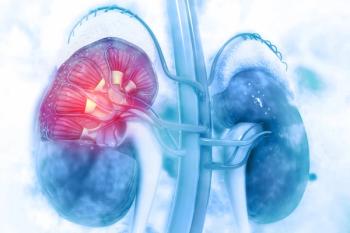
Genes Influence Outcomes of Treatment Sequences in Clear Cell RCC
Specific tumor genotypes could represent distinct subtypes of clear cell renal cell carcinoma, according to a new analysis of the RECORD-3 trial. Genotyping could potentially help guide treatment decisions if the results can be validated.
Specific tumor genotypes could represent distinct subtypes of clear cell renal cell carcinoma (ccRCC), according to a new analysis of the RECORD-3 trial. Genotyping could potentially help guide treatment decisions if the results can be validated.
“We see 12 FDA-approved drugs, and more to come” in RCC, said James J. Hsieh, MD, of Memorial Sloan Kettering Cancer Center in New York, at the 15th International Kidney Cancer Symposium, held November 4–5 in Miami, Florida. “I think we have entered the golden age of kidney cancer therapeutics. The question is, how do we now learn to sequence or combine them to benefit our patients?” The use of precision biomarkers and risk nomograms, he said, are essential.
Hsieh presented results of an analysis of the RECORD-3 trial, which
“We found three genes showed distinct correlation” with treatment outcomes, Hsieh said. Patients with PBMR1 mutations had almost identical progression-free survival outcomes with sunitinib or everolimus, which differed from the overall study results. These patients fared even better than the overall cohort.
In contrast, patients with BAP1 mutations fared worse with regard to progression-free survival, especially with everolimus as the first drug. Finally, in patients with KDM5 mutations, everolimus yielded identical results to the overall cohort while patients fared exceptionally well with the sunitinib → everolimus sequence of agents.
With regard to overall survival, there was no difference in patients treated with the sunitinib → everolimus sequence between PBRM1 wild-type and mutant patients. For the everolimus → sunitinib sequence, though, PBRM1-mutated patients had a hazard ratio (HR) for survival of 0.50 (95% CI, 0.30–0.84; P = .0038) compared with PBRM1 wild-type patients.
The sunitinib → everolimus sequence also had a significant difference between KDM5C wild-type and mutant patients. In that case, KDM5C wild-type patients had an HR for survival of 0.39 (95% CI, 0.18–0.82; P = .0209).
“Specific tumor genotype might represent distinct molecular subtypes of ccRCC with potentially predictive values for targeted therapies of different classes,” Hsieh concluded. “Our analyses are retrospective and hypothesis-generating, [and] need further validation with independent datasets.”
Newsletter
Stay up to date on recent advances in the multidisciplinary approach to cancer.
































































































